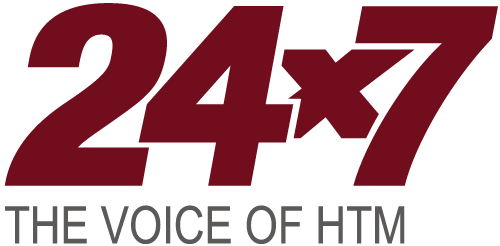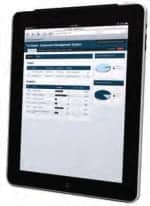A reimagined approach to CMMS workflows positions HTM teams to identify and act on safety risks—not just respond to breakdowns.
By Joseph Gucciardi, MS, CCE
At the 2025 AAMI eXchange in New Orleans, I co-presented a session titled “From Reactive to Proactive: Enhancing Medical Device Safety in the CMMS,” a topic that strikes a nerve with HTM professionals facing increased expectations—from faster repairs and tighter compliance to a stronger role in patient safety.
Our goal was to show how the CMMS can become more than a logbook for work orders. With the right workflow design, it can be a proactive tool for managing clinical risk.
Why Now?
Healthcare organizations are under mounting pressure: aging medical devices, staffing shortages, cybersecurity threats, and increased regulatory oversight. HTM teams are expected to do more with less—and ensure that medical equipment is not only functional but also safe, documented, and ready to support care.
Yet most CMMS tools still rely on basic intake fields and reactive workflows. Tickets often lack context. Safety issues go unnoticed until audits—or worse, until patient care is delayed. HTM teams know the data is there, but they haven’t had the tools to act on it.
A New Approach to CMMS Design
The session introduced a patient safety–oriented redesign of CMMS workflows. While the examples are based on recent implementation experiences, the strategies discussed aren’t vendor-specific; they’re grounded in concepts any HTM team can begin applying.
We focus on five key areas:
- Structured Intake: Forms and digital tools can be designed to capture clinical impact upfront. Questions like “Was patient care delayed?” or “Is the device currently in use?” help flag potential safety risks at the point of intake.
- Risk-Based Triage and Assignment: Instead of triaging by ticket order, workflows can use device attributes, service history, and clinical location to assign and escalate based on risk. Predictive models and rules-based logic can enhance this approach.
- Dashboards that Surface Safety Issues: Dashboards can highlight unresolved work on high-risk devices, show Service Level Agreement breaches, and spot recurring safety-related patterns. These aren’t just metrics—they’re conversation starters for compliance reviews, department meetings, and capital planning.
- Integrations with Other Systems: Tying the CMMS to cybersecurity tools, incident reporting platforms, and recall management systems closes the loop. When device-related risks are flagged in multiple systems, HTM can respond faster and document the full picture.
- Patient Safety as a Workflow Outcome: Medical device safety isn’t just about preventing downtime. It’s about embedding safety logic into how work orders are created, prioritized, routed, and resolved.
Practical Takeaways for Any HTM Team
Any HTM department can begin shifting its CMMS toward safety outcomes by:
- Adding structured intake questions related to patient care impact
- Using existing asset fields (location, criticality) to guide routing
- Creating dashboards that highlight unresolved issues tied to high-risk devices
- Collaborating with risk management, cybersecurity, and informatics teams to share data
These small changes lay the groundwork for a more proactive CMMS—one that not only tracks what’s broken but also helps prevent the next issue from happening at all.
The Road Ahead
As HTM takes on a larger role in clinical safety, our systems must evolve with us. Whether you’re customizing an existing CMMS or exploring new platforms, think beyond the next PM schedule. Ask how your data, workflows, and reporting can help your team surface and act on safety risks—before they reach the bedside.
Author Bio: Joseph Gucciardi, MS, CCE, is a business process consultant with Optimum Healthcare IT and a certified clinical engineer. He previously served as a senior regional clinical engineer with the US Department of Veterans Affairs.
Disclosures: The author consults on healthcare workflow design and implementation. This article reflects general principles and does not promote any specific product or platform.
ID 113077722 © Dreammasterphotographer | Dreamstime.com





